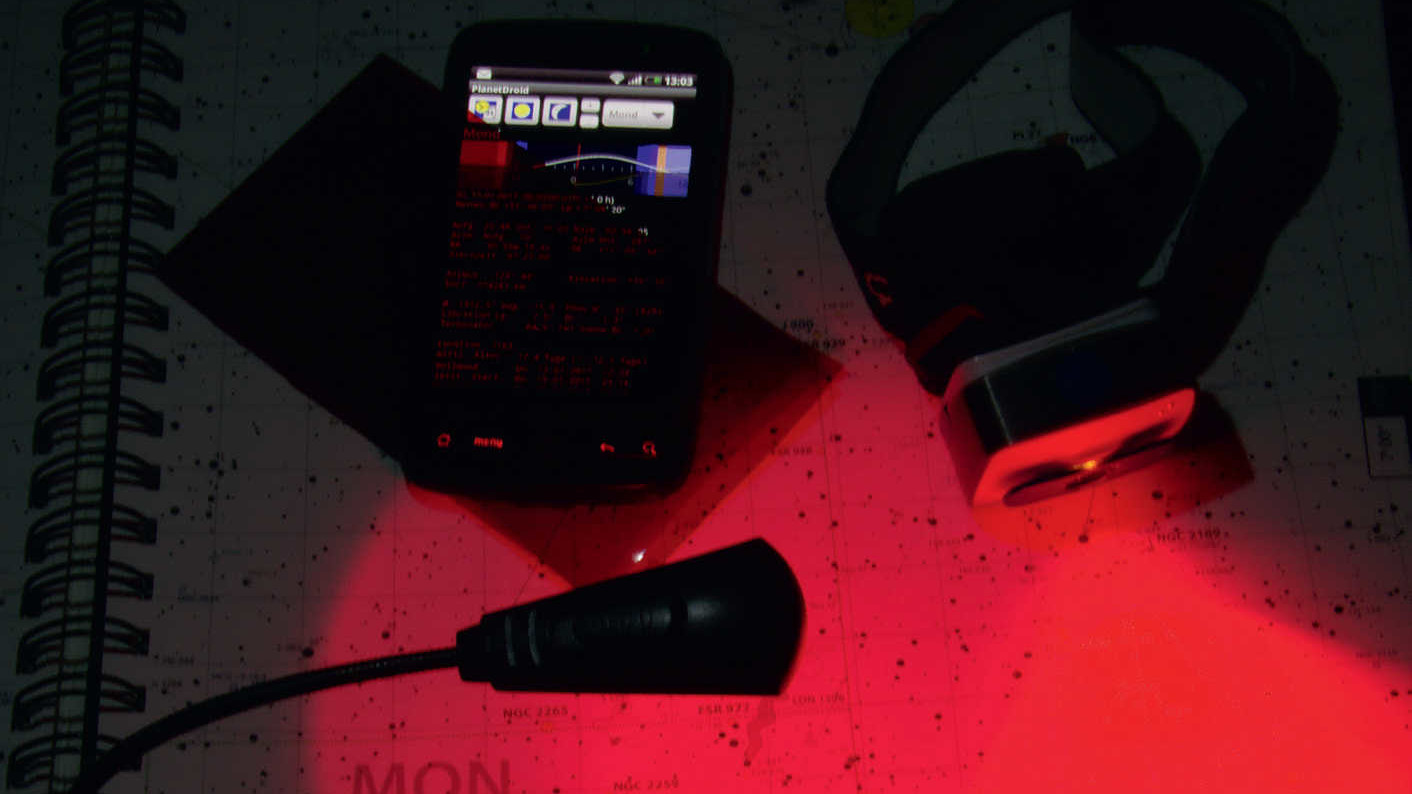Tuning light
Often it’s the smallest things that determine how much fun and success you will have when observing. The right light is one of these things.
 Light matters: best of all it should be deep red light. S. Wienstein
Light matters: best of all it should be deep red light. S. WiensteinAn illumination concept adapted to the observation situation can help to deliver significantly better results
Red light should, above all, be deep red – and this is not always the case. Most of the time, however, you will only notice this if you make a direct comparison. Even LEDs are not automatically the right shade of red. If you are devising your own illumination, you should take a look at LEDs with a dominant wavelength of around 650nm. If you buy ready-made, you should check the light colour and the quality of the finish of the torch or lamp. Some lamps are made of white LEDs with red-coloured diffusors. Their red light is fine, but in some cases poor construction may allow white light to escape from around the torch housing. If you are observing in a really dark environment, you will immediately notice the white light, for example if you are using a map.
All lights should be switched off during periods of intensive observation. A snug-fitting eyepiece eyecup helps against unwanted ambient light and in extreme cases you could shield yourself under an observing hood. Even catching sight of a white tube just beyond the eyepiece with your free eye can be distracting. Deep sky observers therefore often stick black velour film on areas of the tube around the focuser that may otherwise be distractingly visible.
Disturbing indicator lights
With the increasing mechanisation of our hobby, there are also ever more unnecessary light sources, such as control LEDs, which all too often glow bright blue or green. The LEDs on hand control boxes are notorious here. Some are faint enough that you can darken them with a waterproof pen. If this is not enough, aluminium foil and adhesive tape can be used to create an impenetrable cover, which can be removed if necessary without leaving any residue.
Camera, laptop, and smartphone displays, and unfortunately also ever more often, intelligent telescope control displays, can interfere with dark adaptation even if the display is itself red. Apps and programs that switch the display to red may not be enough because many displays always generate white background light or because the red display is not a deep enough red colour. Red filter foil is the solution here. It is readily available, sold as a filter film for stage spotlights, and can then be cut to fit. It even works with touch displays since it is very thin.
When Jupiter dazzles
In view of the efforts to ensure red illumination described above, it may seem strange that star friends sometimes illuminate their telescope tube close to the focuser with white light. However, this sometimes makes sense: if you are observing bright objects, the eye may be somewhat dazzled. This is especially the case with Jupiter. The giant planet is bright and its details are highlighted in pastel shades. Although the image brightness can be reduced using grey filters and high magnification, it can still dazzle because the eye still perceives the giant planet as a small, bright object in a dark environment. Another example is when observing a binary star with a large brightness difference, when the fainter component is bright enough for detection without dark adaptation, but the brighter component outshines it with its glare.
In these cases, white ambient light can help the eye to adjust. A white light source, such as a torch or a gooseneck LED light, should be aligned in such a way that you are not looking directly into the light, but still are aware of a pleasant brightness around the focuser. This, of course, contradicts the dark masking of the tube described above. But a sheet of paper or a suitably cut cardboard is quickly attached with adhesive tape, no matter whether you need more or less black or white masking.
Author: Sven Wienstein / Licence: Oculum Verlag GmbH
